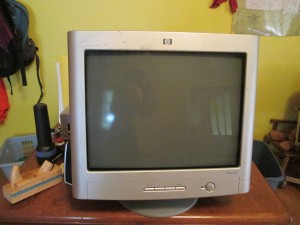Publications
I had the pleasure to write or co-author the following publications:
- “A Brief History of the Accessibility of Computers by Blind People” was written in Amplifying Your Effectiveness: Collected Essays which was published by Dorset House Publishing in 2000. This article explains the transition of computers regarding programs for blind users. The way a picture is described through concepts is also discussed. As new technologies and the internet continue to grow, we must keep finding ways to remain up to date in accessibility. The technical essay was first presented at the conference Amplify Your Confidence. You can buy this book on Amazon.
- Time-Sharing Terminal Adapted for Use by Blind Computer Users was published with the University of California, Lawrence Berkeley Lab in November 1978. It discusses how to recognize a computer’s output if you are blind. The history of how accessibility in using computers is detailed as well as the diverse technologies used. This paper was delivered at the Hawaii conference on system sciences in 1979. You can read the article on eScholarship.
- In 1977, “A Time-Sharing Terminal Adapted for Use by Blind Programmers” was published in the 5th annual ACM SIGUCCS Conference on User Services on pages 57-59. Similar to the article for Lawrence Berkeley Lab, this document addresses how blind people can better understand computer output. The two options, hard copy and batch input with high speed line printer output, are both difficult to use. Thus, new options are being researched. This article is available for sale on ACM Digital Library.
Also, I am interested in writing several books. For example, one idea is a treatise on perception which addresses how young children, blind or not, do not realize that they are different. It is only when they grow older that their perceptions change because of forces that get in the way. Hopefully, this book would provide a reality check for people about what is true and distorted in our view of the world.
Another idea has to do with spacial representation which has a large visual component in which graphs and images are used to help one think. For example, in computer science networks of nodes with links between them are drawn to represent the many paths that one can take. The importance of visualization must be treated as a human right for blind people to be ready and conversant in the visualization of the world. I expect to formulate research that would prove this out including exposing blind children at an early age to all sorts of raised line images and three dimensional objects.
A final idea rests on the belief that science is revealing, not discovering. The universe is already discovered since it is created by God who has the perfectly ordered plan. This can be shown in science and computer science by viewing the incredible ordered math, algorithms, perfectly arranged systems, etc. Thus God gives us the ability to learn and experience the revealing of the existing universe. This is in stark contract to the view that humans explore the universe around them as if there was no knowledge before their discovery.
